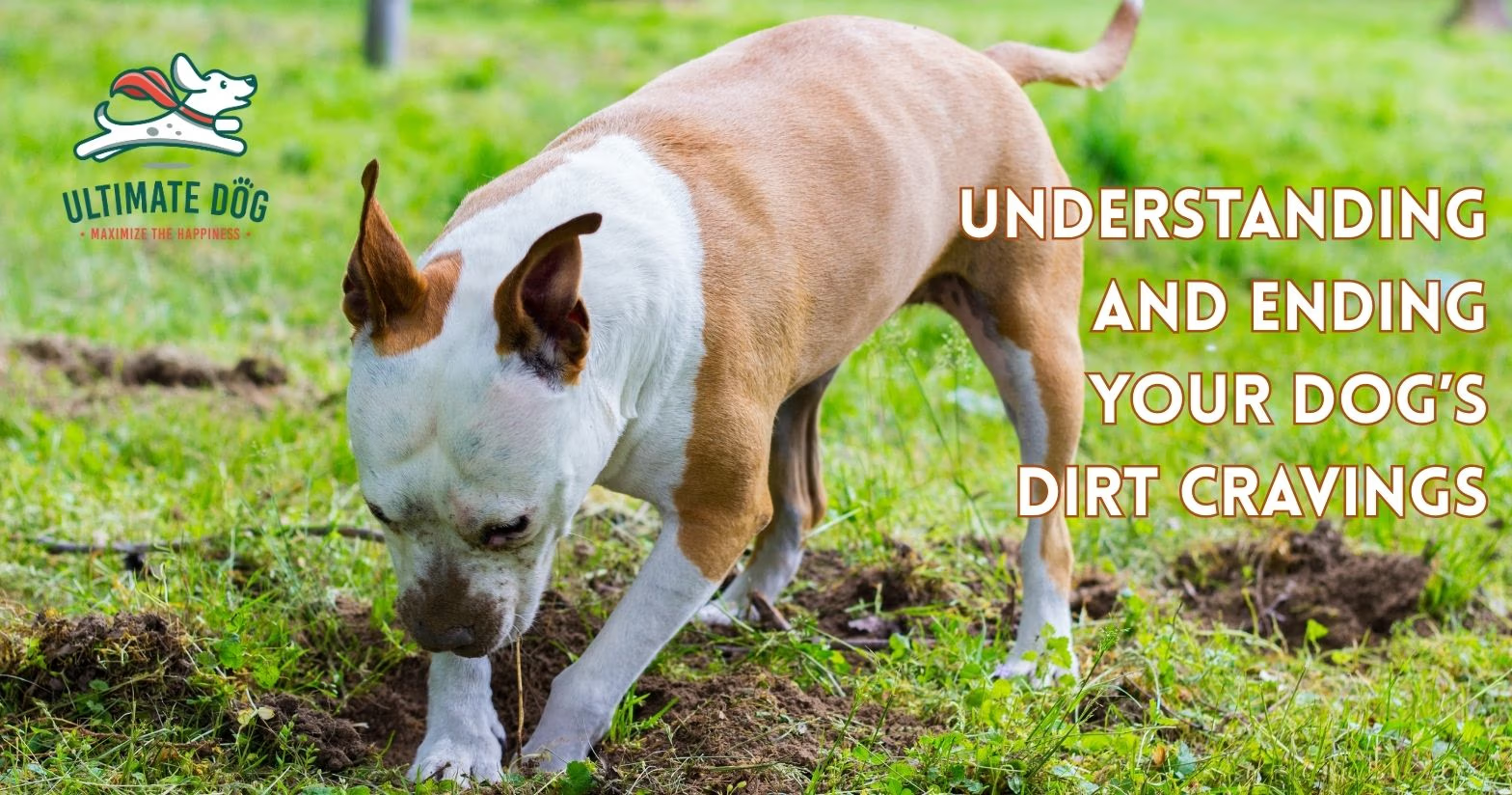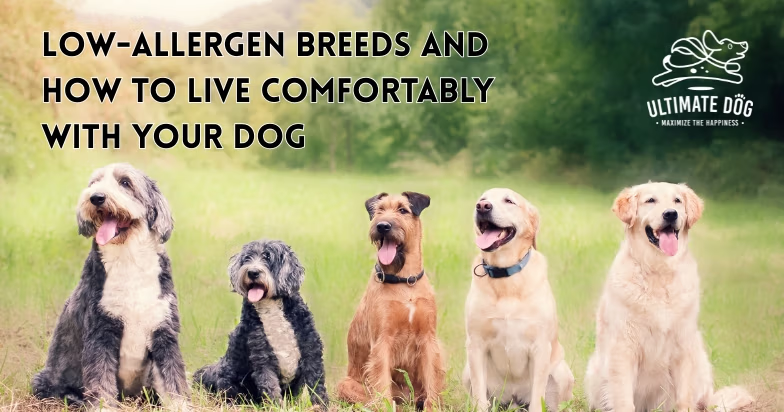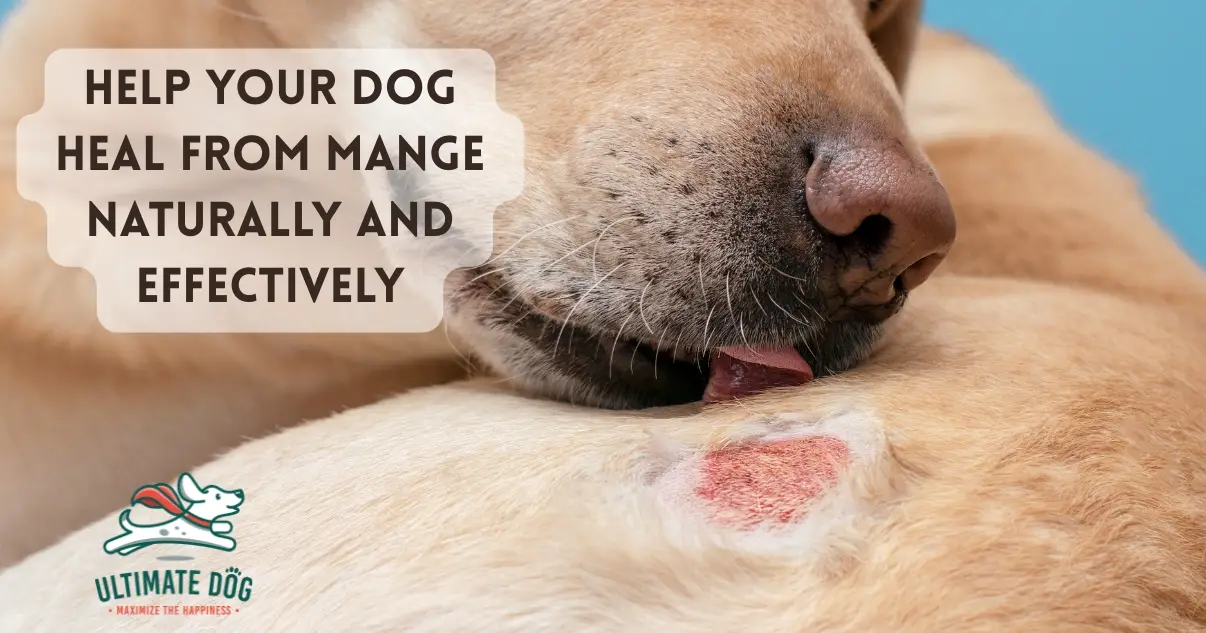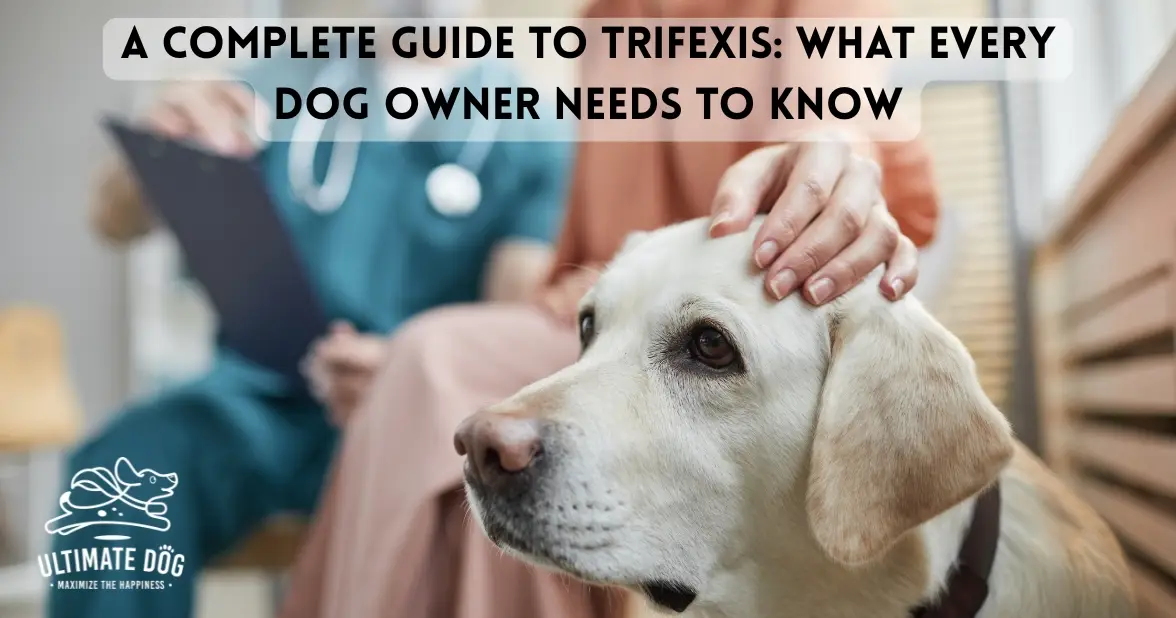TL;DR: Dogs eat dirt due to nutritional deficiencies, behavioral triggers (stress/boredom), or medical conditions. Most cases resolve within 2-4 weeks through dietary improvements, increased enrichment, and addressing underlying health issues. If you ever find yourself asking, ‘why would a dog eat dirt’, seek veterinary care for persistent daily consumption or concerning symptoms.
We know it can tough to watch your beloved companion munching on dirt in the backyard, leaving you wondering if something’s seriously wrong. This puzzling behavior, called geophagia (a form of pica), affects dogs across all ages and breeds—and the reassuring news is that it’s often completely manageable with the right understanding and approach.
Understanding the question of why would a dog eat dirt can lead you to better care strategies for your furry friend.
Your dog’s dirt-eating habit isn’t random misbehavior—it’s their way of communicating an unmet need. Whether they’re seeking essential minerals, coping with stress, or responding to a health condition, there’s always a reason behind this behavior. Watching our furry family members engage in concerning behaviors can leave us searching for answers and seeking ways to help them.
The encouraging truth? Most cases resolve quickly once we identify and address the root cause. Through evidence-based research and natural approaches, we can help you transform this concerning habit into an opportunity for a deeper understanding of your dog’s wellness. Natural, effective solutions for lifelong health often begin with simple adjustments to nutrition, environment, and daily enrichment.
Why would a Dog Eat Dirt: Understanding the Science Behind Geophagia
When we see our dogs consuming soil, we’re witnessing geophagia—a specific form of pica where animals consume non-food substances [1]. This isn’t poor training; it’s a deeply rooted biological response that can affect any dog, regardless of breed, age, or background.
The reassuring reality? Geophagia often represents your dog’s natural problem-solving instincts at work. Just as humans crave specific foods when our bodies need certain nutrients, dogs may turn to soil when their systems detect deficiencies [4]. This behavior stems from three primary categories:
- Nutritional factors: The Diet lacks essential minerals
- Behavioral triggers: Stress, anxiety, or insufficient mental stimulation
- Medical conditions: Underlying health issues creating specific cravings [1]
What makes this particularly manageable is that each category offers clear pathways to improvement. Unlike random behavioral quirks, geophagia follows predictable patterns that respond well to targeted interventions. When we understand that your dog isn’t being “bad,” but rather responding to genuine physiological or emotional needs, we can approach the situation with compassion and effective solutions.
Scientific research shows that clay and soil consumption actually serve adaptive functions in many species, including dogs. Studies reveal that consuming certain types of clay can help bind toxins in the gastrointestinal tract, suggesting some dirt-eating behaviors may represent your dog’s instinctive attempt to support their digestive health [5]. This doesn’t mean we should allow unrestricted soil consumption, but it helps us appreciate the intelligence behind what might initially seem concerning.
The Three Root Causes: What Drives Dirt-Eating Behavior
Nutritional Deficiencies: When Your Dog’s Diet Falls Short
It can feel overwhelming to discover that, despite your best efforts, your dog’s diet might be missing crucial elements. Dogs experiencing nutritional deficiencies will instinctively seek essential minerals like sodium, iron, and calcium from soil when their regular food fails to provide adequate nutrition [1]. This isn’t a reflection of your care—it’s your dog’s biological programming working to maintain their health.
Key nutritional triggers include:
- Low-quality kibble: Commercial foods sometimes lack bioavailable minerals that dogs can easily absorb [3]
- Inadequate portions: Underfed animals consume dirt as their bodies desperately compensate for caloric and nutritional gaps [2]
- Missing natural minerals: Domesticated dogs lack the calcium-rich bones their ancestors consumed, driving them toward mineral-rich soil [3]
When essential building blocks are missing, your pup’s body sends powerful signals driving them toward alternative sources—including the mineral-rich soil beneath their paws. This goes beyond simple hunger; it’s a complex physiological response where the digestive system seeks any available source of nutrients.
Behavioral Triggers: Stress, Boredom, and Emotional Needs
Watching your energetic companion resort to dirt consumption can be particularly heart-wrenching when you realize it might stem from boredom or insufficient mental stimulation. Dogs experiencing inadequate exercise or enrichment frequently manifest their frustration through dirt-eating behaviors [6]. Just as humans might engage in stress eating when understimulated, our canine friends may turn to available environmental elements when their physical and mental needs aren’t met.
Common behavioral triggers:
- Separation anxiety: Dogs use soil consumption as self-soothing during periods of heightened stress [6][7]
- Chronic stress: Environmental overwhelm creates compensatory behaviors
- Compulsive disorders: Research reveals that dogs with compulsive behavioral disorders show a 29% prevalence of pica behaviors compared to only 8% in unaffected dogs [8]
The connection between emotional well-being and dirt consumption becomes particularly evident when we consider that dogs use this behavior as a self-soothing mechanism. The physical act of chewing and consuming provides sensory stimulation that can temporarily calm their nervous system. Unfortunately, if underlying stressors remain unaddressed, this coping strategy can develop into a persistent habit.
Medical Conditions: When Health Issues Drive the Behavior
Understanding that medical conditions can trigger dirt-eating behavior helps us approach this situation with the compassion and urgency it deserves. Conditions such as anemia, gastrointestinal disturbances, and liver shunts can create specific cravings that drive dogs toward soil consumption as their bodies attempt to address underlying health imbalances [4].
Medical conditions commonly associated with dirt-eating:
- Chronic conditions: Inflammatory bowel disease, hypothyroidism, and kidney disease frequently create secondary anemia [3]
- Digestive issues: Pica behavior may represent an adaptive response to bind or dilute toxins in the gastrointestinal tract [5]
- Absorption problems: Complex medical conditions affect how well dogs absorb nutrients from regular food
Medical intervention becomes essential when underlying health conditions are suspected, particularly if the dirt-eating behavior appears suddenly in a previously unaffected dog or coincides with other symptoms like lethargy, appetite changes, or digestive upset.
Recognizing Normal vs. Concerning Dirt-Eating Patterns
We understand how challenging it can be to determine whether your dog’s soil sampling falls within normal behavior or requires immediate attention. Occasional dirt-eating, particularly during puppyhood or while exploring new environments, represents natural curiosity. Many dogs will taste environmental elements as part of normal sensory exploration.
Normal Patterns:
- Occasional tasting during exploration
- Puppy curiosity (especially 6 weeks to 6 months)
- Brief episodes in new environments
Concerning Patterns Requiring Attention:
- Persistent daily consumption over multiple days or weeks
- Large quantities are consumed in single sessions
- Obsessive behavior where dogs seem unable to resist despite redirection
- Accompanying symptoms: vomiting, lethargy, appetite changes [4]
- Age factors: Sudden onset in older dogs (median pica onset occurs at 5 months, ranging from 6 weeks to 11 years) [8]
Several warning signs should prompt immediate evaluation. If your dog shows signs of distress when prevented from accessing dirt or becomes fixated on specific soil areas, these patterns suggest compulsive elements that benefit from professional guidance.
The Hidden Dangers: Health Risks Every Dog Owner Should Know
While we don’t want to create unnecessary alarm, understanding genuine health risks associated with regular dirt consumption helps you make informed decisions about your dog’s safety.
Immediate Physical Risks:
- Intestinal impaction: Consumed soil, rocks, or debris can accumulate in the digestive tract, potentially requiring surgical intervention [4]
- Dental damage: Sharp stones can chip or break teeth, while gritty soil causes excessive wear over time [4]
- Foreign object injuries: Objects mixed with soil can lodge between teeth or cause soft tissue injuries
Environmental Toxicity Concerns:
- Pesticide and fertilizer poisoning: Chemical treatments can cause acute symptoms, including vomiting, diarrhea, difficulty breathing, and neurological signs [4]
- Parasitic infections: Toxocariasis shows 16-30% seroprevalence in certain populations due to contaminated soil containing parasite eggs [9]
- Regional parasite risks: Baylisascaris infections show higher prevalence in younger dogs, particularly in the Northeastern and Midwestern United States
These microscopic threats can remain viable in soil for extended periods, making even seemingly clean earth potentially hazardous. Prevention proves far preferable to treatment for these serious complications.
Natural Prevention Strategies: Holistic Solutions That Actually Work
Optimizing Your Dog’s Nutrition Naturally
The foundation of preventing dirt consumption lies in ensuring complete, balanced nutrition that meets individual needs. Transition to high-quality, whole food-based nutrition that provides bioavailable minerals in forms your dog’s body can easily absorb.
Natural nutritional solutions:
- Bone broth: Made from organic, grass-fed sources, provides naturally occurring calcium, phosphorus, and essential minerals
- Kelp meal: Natural source of iodine and trace minerals
- Spirulina: Provides iron and B-vitamins supporting healthy blood formation
- Frequent feeding: Divide daily food into 3-4 smaller portions to maintain stable blood sugar and reduce hunger-driven behavior
Monitor your dog’s body condition and energy levels as indicators of nutritional adequacy. Dogs receiving optimal nutrition maintain steady weight, exhibit consistent energy, and show healthy coat condition.
Enrichment and Exercise: Meeting Behavioral Needs
Physical exercise appropriate for your dog’s breed, age, and energy level forms the cornerstone of behavioral prevention. Most dogs require 30 minutes to 2 hours of daily activity, varying significantly based on genetic background and life stage.
Mental stimulation strategies:
- Puzzle toys and sniff mats: Engage problem-solving abilities
- Interactive feeding solutions: Provide satisfying mental challenges
- Rotation system: Introduce new puzzles every few days while storing others
- Structured routines: Consistent times for meals, walks, and play reduce anxiety
Address separation anxiety through gradual conditioning techniques. Start with brief departures (just minutes) and gradually increase duration as your dog demonstrates comfort. Provide special toys that only appear during your absence, creating positive associations with solitude.
Environmental Management: Creating Safe Outdoor Spaces
Proactive yard management protects your dog while allowing natural behaviors:
Safety measures:
- Regular inspection: Remove toxic plants, chemicals, or contaminants
- Treatment protocols: Restrict access 72 hours after pesticide/fertilizer application, or avoid toxic yard products altogether – there are many natural, pet-safe alternatives available today
- Mushroom removal: Check for and immediately remove suspicious growths
Behavioral redirection:
- Designated digging areas: Create a special spot filled with clean sand or loose soil to satisfy your dog’s natural excavation instincts.
- Treasure hunts: Hide toys or treats in the approved digging zone to encourage them to use it.
- Natural deterrents: In problem areas, try laying chicken wire or lattice just under the soil, covering spots with large smooth river rocks, using cedar or cypress mulch, or planting dog-safe but unappealing plants like rosemary or lavender. Motion-activated sprinklers can also help keep curious paws away.
- Supervised outdoor time: Combine recall training with interactive play to keep your dog engaged while you redirect unwanted behavior.
Eco-Friendly Yard Safety: Protecting Your Dog While Caring for Earth
Organic lawn care alternatives eliminate pesticide and fertilizer risks that make dirt consumption particularly dangerous. Natural approaches using compost, organic matter, and beneficial microorganisms create healthy soil supporting robust plant growth without toxic chemicals.
Sustainable solutions:
- Native plant selection: Reduces need for soil amendments and chemical interventions
- Composting systems: Create dog-safe, nutrient-rich soil naturally while reducing household waste
- Rain gardens: Filter water naturally, reducing harmful chemical concentrations
- Natural drainage: Prevent contaminated runoff from neighboring properties
These methods often prove more effective long-term than synthetic alternatives while providing safer environments for both your dog and local wildlife.
Age-Specific Considerations: Puppies, Adults, and Senior Dogs
Puppies (8-16 weeks):
- Normal exploration: Investigate everything through the mouth as part of development
- Gentle redirection: Works better than punishment; harsh corrections create anxiety
- Appropriate alternatives: Provide suitable chew toys and redirect to acceptable options
Adult Dogs:
- Sudden onset: Usually indicates nutritional deficiencies, environmental stressors, or health conditions
- Systematic evaluation: Requires assessment of diet, exercise, environment, and health status
- Targeted intervention: Address specific underlying causes rather than symptoms alone
Senior Dogs:
- Cognitive changes: Dysfunction syndrome can cause confusion and anxiety, manifesting as pica
- Medication effects: Certain prescriptions affect appetite or create mineral deficiencies
- Gentle approaches: Consider physical limitations and cognitive changes while addressing health concerns
Tailored intervention strategies based on developmental stage ensure appropriate and effective responses to dirt consumption across all life stages.
When to Consult Your Veterinarian: A Clear Decision Guide
Immediate Consultation Required:
- Daily dirt consumption or large quantities
- Inability to resist behavior despite intervention attempts
- Accompanying symptoms: vomiting, lethargy, appetite changes
- Obsessive patterns: Distress when prevented from accessing dirt
Diagnostic Recommendations:
- Blood work: Complete blood count reveals anemia; metabolic panels assess organ function
- Behavioral assessment: Distinguish between medical and behavioral causes
- Professional evaluation: Particularly valuable when multiple factors contribute
Follow-up Protocols:
- Timeline: Reassess behavior 2-4 weeks after implementing changes
- Documentation: Track frequency, quantity, and behavioral changes
- Objective measures: Provide concrete progress indicators during consultations
Don’t wait for additional symptoms to develop—early intervention typically produces better outcomes with less intensive treatment.
Success Stories: Long-Term Solutions That Transform Lives
Real transformation examples demonstrate hope and possibility:
Nutritional Success: A two-year-old Labrador consuming handfuls of soil daily showed complete resolution within three weeks after transitioning from low-quality kibble to a whole-food diet with natural iron supplementation. No recurrence after eighteen months.[10]
Behavioral Achievement: A Border Collie mix with obsessive dirt consumption due to boredom showed complete resolution through daily puzzle feeding, agility training, and interactive play sessions engaging their problem-solving abilities.[11]
Timeline Expectations:
- Nutritional deficiency cases: Often improve within days of dietary corrections
- Behavioral modifications: Typically require 3-6 weeks for habit changes to solidify
- Medical conditions: May need 6-12 weeks for full resolution as underlying health issues improve
Your dog deserves the best, and we’re here to help you navigate this journey with evidence-based approaches addressing both immediate concerns and long-term well-being. Remember that dirt-eating behavior often represents your dog’s intelligent attempt to meet unmet needs.
Natural, effective solutions for lifelong health begin with recognizing that your dog’s dirt consumption isn’t a character flaw—it’s valuable communication about their physical or emotional needs. Watching our furry family members engage in initially alarming behaviors can, over time, lead to better understanding and stronger bonds. Through patience, knowledge, and appropriate intervention, most dogs can overcome dirt-eating habits while developing healthier, more satisfying ways to meet their needs.
Sources:
[1] Michelle Diener, DVM. “Why Do Dogs Eat Dirt?” PetMD, 30 Nov. 2021.
[2] “Why Is My Dog Eating Dirt?” Cronulla Vet Clinic, 19 June 2023.
[3] Alex Seilis. “Why Do Dogs Eat Dirt? (And What To Do About It).” Dogs Naturally, 12 Aug. 2024.
[4] Kristina Lotz. “Why Does My Dog Eat Dirt?” American Kennel Club, 18 Oct. 2022.
[5] Perez, Julianna et al. “Pica as a clinical sign of a chronic enteropathy in dogs and cats.” Journal of the American Veterinary Medical Association vol. 263,8 1027-1032. 16 May. 2025, doi:10.2460/javma.25.02.0079
[6] “Why Do Dogs Eat Dirt, Mud, and Soil?” Purina, 5 June 2025.
[7] “Why Do Dogs Eat Dirt.” Grove Animal Hospital, 30 May 2024.
[8] Alice A. Moon-Fanelli PhD, Nicholas H. Dodman BVMS, DACVB, and Nicole Cottam MS. Blanket and Flank Sucking in Doberman Pinschers. Journal of the American Veterinary Medical Association, 15 Sept. 2007.
[9] Callahan, Gerald N. “Eating dirt.” Emerging infectious diseases vol. 9,8 (2003): 1016-21. doi:10.3201/eid0908.ad0908
[10] CJ Puotinen. “Does Your Dog Have an Eating Disorder?” The Whole Dog Journal, 22 Apr. 2019.
[11] Kimberly Alt. “I Thought My Dog Was Just Being Weird. Then I Learned Why Dogs Eat Dirt.”Canine Journal, 25 June 2025.

AI-researched and drafted article. Reviewed, edited, and certified by Daiva Rizvi, NC, BCHN, CCH.
Daiva Rizvi is a Board-Certified Holistic Nutritionist and a Board-Certified Classical Homeopath (for humans). As Chief Formulator for Ultimate Dog and creator of the CHIRP allergy supplement for dogs, she brings her passion for natural healing to pet wellness. Learn more about Daiva here https://oldcountrywellness.com















